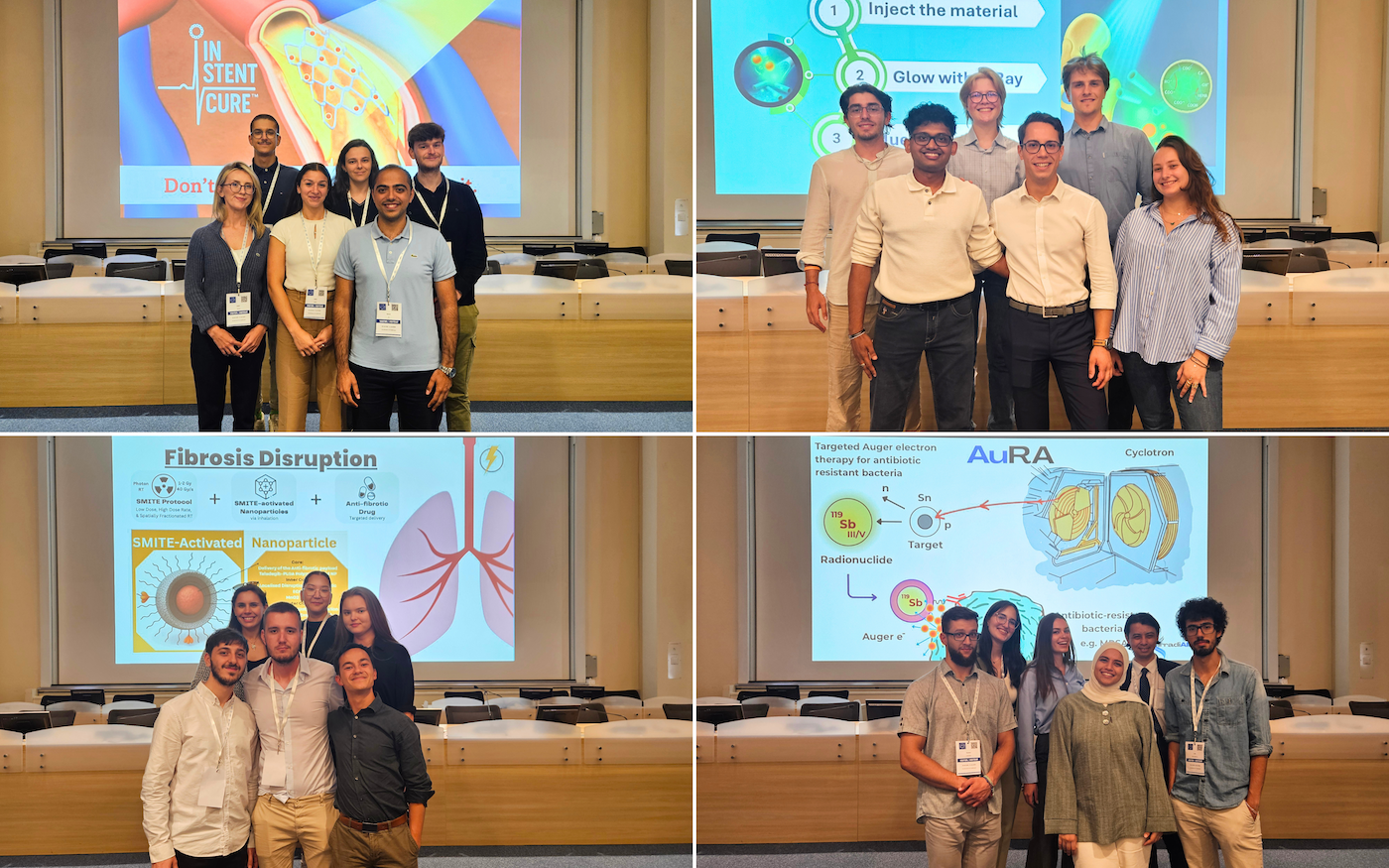
Of the tens of thousands of particle accelerators in operation worldwide, only a few are used to explore the fundamental constituents of the Universe. The rest are used in industry and for medical purposes, such as cancer therapy.
A group of international students recently completed a challenge to come up with new ways in which particle accelerator technologies can be used to address some of healthcare's most pressing issues.
The fourth Challenge Based Innovation (CBI) event, hosted at CERN and the European Scientific Institute in Archamps from 22 to 31 July, was part of the European-Union-funded I.FAST project, which aims to enhance innovation in accelerator physics to meet the increasing demands from applied science, industry and medicine.
Four teams, made up of six students each, were tasked to come up with new ways in which accelerators could be used to tackle healthcare issues, and to think about how to pitch their ideas to potential investors. The teams comprised physicians, life scientists, chemists, physicists and engineers, and represented 14 countries and 18 different nationalities. They spent nine days learning about accelerators and receiving mentoring on start-ups, pitching and communication, and then proposed their ideas to a panel of expert judges at CERN on 31 July.
The winning team, IrradiAID+, suggested an innovative approach to combating antibiotic resistance using targeted Auger electron therapy. Their idea set out a way to tackle methicillin-resistant Staphylococcus aureus - commonly known as MRSA - with targeted radionuclide therapy using very-low-energy electrons (Auger electrons or AEs). The idea of using AEs for MRSA is new and stems from investigations into using a similar approach to treat cancer. The IrradiAID+ team suggested a novel radiopharmaceutical for the procedure, based on its optimal properties.
"We worked a lot and I learned a lot about things that are not in my area of expertise," said team member Ajla Džaka, a master's student in electrical engineering at the University of Sarajevo. "What I loved was that if we had a problem that we couldn't solve we could go to another team and ask them - it was a nice environment to work in."
The other three participating teams also received high praise from the judges for the quality of their proposals:
- BEamWELL: A unique way to improve treatment for restenosis after stent implantations, a possible repercussion of a medical procedure used to manage narrowed or blocked coronary arteries;
- The T.E.A.M: A novel bone cement, based on a product used in dentistry, to treat fractures for patients suffering from osteoporosis, which addresses some of the difficulties caused by the most widely used cement;
- Beam of Hope: A therapy involving low-dose radiation and nanoparticles to tackle advanced-stage pulmonary fibrosis using a particle accelerator to break fibrotic tissue, allowing medicine to be effective again.
"This year's student projects were impressive," says accelerator physicist and CBI coordinator Nicolas Delerue of Université Paris-Saclay. "I am convinced that this is a great investment for their future and for Europe's future."
The fourth CBI event is the last under the current I.FAST project. Participants are encouraged to continue working on their ideas, and all four teams from the fourth edition expressed an interest in doing so. Two teams from previous CBI editions have carried out validation experiments, with one team forming a startup.






